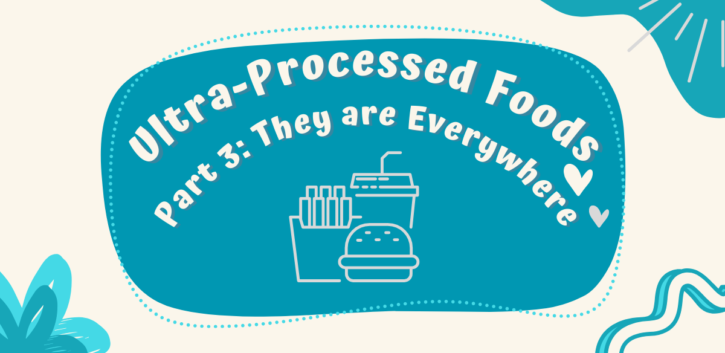Over the past few weeks, we’ve been chatting about ultra-processed foods—the sneaky culprits behind many health struggles. Today, we’re digging deeper into why we have so much ultra processed foods in our food system. Next week we’ll talk about real-life, practical strategies for decreasing your ultra-processed food intake. To get my regular nutrition emails, my personal meal plans for the week, updates about working together and more, can sign up here!
Ultra-Processed Foods Everywhere [Part 3]
Did you know that 12 plants and 5 animals make up 75% of all the food consumed on Earth?
Did you know that in the U.S., the government provides substantial subsidies to a select group of crops, with the top five being corn, soybeans, wheat, cotton, and rice.
This system seems to have started with good intentions: helping farmers stabilize their agriculture during the Great Depression era and feeding Americans. While it continues to stabilize farming and provide a steady food supply for the U.S., it has profoundly impacted our food system and diet.
This conversation could be so multifaceted it’s not even funny (political divide, finances, climate, energy, animal welfare, food insecurity discussions, etc.). While those discussions are happening elsewhere, the impact I’m specifically focusing on is how it has contributed to why we eat so much ultra-processed food in America.
By subsidizing these specific ingredients, the following impacts have been made which have shaped the food industry:
- Abundance of cheap ingredients. Take corn, for example: only 1% of the corn produced is consumed as whole corn (corn on the cob). Here are at least 10 other ingredients made from corn and found in ultra-processed foods: high-fructose corn syrup, corn starch, modified starches, hydrogenated oil, dextrin, maltodextrin, thickeners, emulsifiers, cornflake cereals, corn chips, etc.
As for wheat, here are some ingredients derived from it that are also found in ultra-processed foods: refined wheat flour, white flour, enriched wheat flour, wheat starch, wheat protein isolate, maltodextrin, and more. - Cheap ingredients mean easy access for food producers. The low prices incentivize food companies to use more of these subsidized ingredients in their products.
- Cheaper and more convenient food items mean we, the consumers, buy more of them. According to one study, 56% of all calories consumed in the U.S. come from major subsidized foods.
- Food companies spend billions to get us to buy more. While I couldn’t find an exact dollar amount, I did find that over $8 billion was spent on marketing sugary beverages in 2018 — and that was just beverages! We see the marketing every day, and we see it subliminally when we aren’t even paying attention.
- Even “healthy” food companies (think Kind Bars, Cliff Bars, Annie’s, etc.) are packed with ingredients from these subsidies. These companies spend money on marketing campaigns to convince us their products are healthier. In reality, they’re still relying on the same 5 subsidized ingredients dominating our food supply.
Don’t worry, it’s not all doom and gloom! More to come next week on what we can start doing today to reduce our ultra-processed food consumption.
